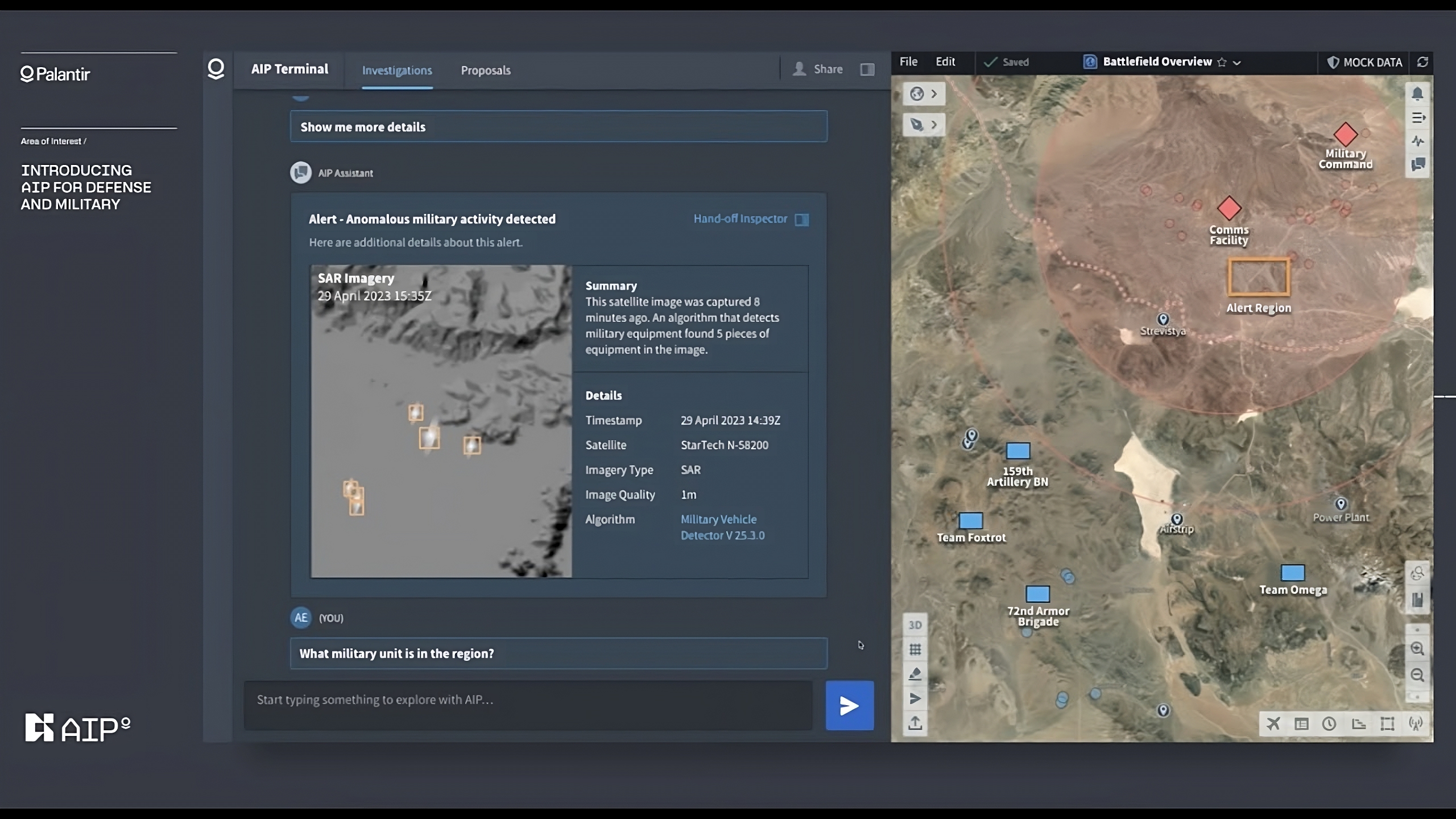Palantir has demonstrated how AI can be used for national defense and other military purposes.
The use of AI in the military is highly controversial. In this context, Large Language Models (LLMs) and algorithms must be implemented as ethically as possible.
Palantir believes that’s where its AI Platform (AIP) comes in. AIP offers cutting-edge AI capabilities and claims to ensure that the use of LLMs and AI in the military context is guided by ethical principles.
AIP is able to deploy LLMs and AI across any network, from classified networks to devices on the tactical edge. AIP connects highly sensitive and classified intelligence data to create a real-time representation of the environment.
The solution’s security features let you define what LLMs and AI can and cannot see and what they can and cannot do with safe AI and handoff functions. This control and governance are crucial for mitigating significant legal, regulatory, and ethical risks posed by LLMs and AI in sensitive and classified settings.
AIP also implements guardrails to control, govern, and increase trust. As operators and AI take action on the platform, AIP generates a secure digital record of operations. These capabilities are essential for responsible, effective, and compliant deployment of AI in the military.
In a demo showcasing AIP, a military operator responsible for monitoring activity within Eastern Europe receives an alert that military equipment is amassed in a field 30km from friendly forces.
AIP leverages large language models to allow operators to quickly ask questions such as:
- What enemy units are in the region?
- Task new imagery for this location at a resolution of one metre or higher
- Generate three courses of action to target this enemy equipment
- Analyse the battlefield, considering a Stryker vehicle and a platoon-size unit
- How many Javelin missiles does Team Omega have?
- Assign jammers to each of the validated high-priority communications targets
- Summarise the operational plan
As the operator poses questions, the LLM is using real-time information integrated from across public and classified sources. Data is automatically tagged and protected by classification markings, and AIP enforces which parts of the organisation the LLM has access to while respecting an individual’s permissions, role, and need to know.
Every response from AIP retains links back to the underlying data records to enable transparency for the user who can investigate as necessary.
AIP unleashes the power of large language models and cutting-edge AI for defense and military organisations while aiming to do so with the appropriate guardrails and high levels of ethics and transparency that are required for such sensitive applications.
(Image Credit: Palantir)
Want to learn more about AI and big data from industry leaders? Check out AI & Big Data Expo taking place in Amsterdam, California, and London. The event is co-located with Digital Transformation Week.
Explore other upcoming enterprise technology events and webinars powered by TechForge here.
